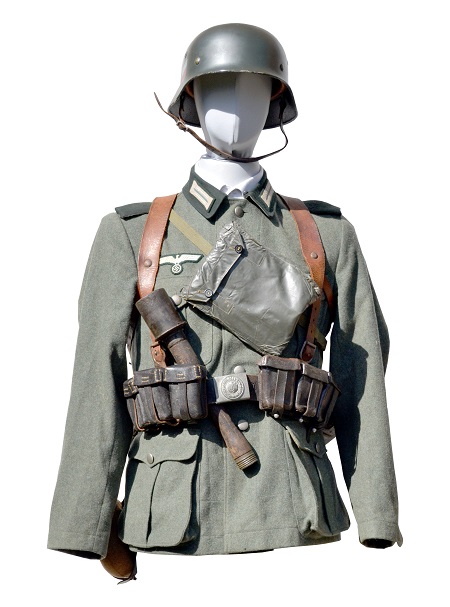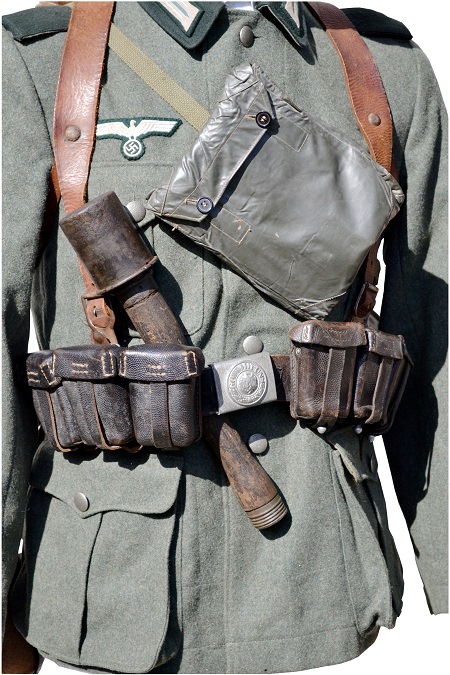
Uniform of a German Wehrmacht rifleman 1939-40.
This is the standard uniform of the early-WW2 German infantryman. The soldier wears the standard M35 steel helmet with the national tricolour shield on the right-hand side and the army shield, consisting of a silver-grey eagle surmounted on a swastika on a black background. The shape and type of steel utilised in the manufacture of the helmet gave the wearer excellent protection and was superior to the helmets used by Allied forces.

The tunic is the M36 version made from a high-quality woollen fabric and carries a conventional army embroidered breast eagle above the right chest pocket and infantry collar tabs. The M34 pack is made of canvas, with an unshaven calf skin flap to improve its waterproof qualities and has integral carrying straps and belt supports. The ammunition pouches are the standard M1911 versions in leather and the pair of pouches would carry 60 rounds of 7.92mm ammunition for the Mauser K98 rifle in 5-round clips. The regulation army belt and buckle are worn.

The remaining field gear carried is pretty much universal across the German armed forces. It consists of an M33 bread bag for carrying rations, an M31 water bottle, an entrenching tool with the Mauser bayonet strapped to it and finally, an M38 gas mask canister and attached to the strap of the canister, and worn across the chest, is the gas cape holder.


The Reibert is a guide for the German armed forces. It was first produced in 1929 and is named after Colonel Dr Wilhelm Reibert, the original author. While it is considered to be essential reading, the publication was never official. Originally, there were as many as 18 different editions, covering various branches of the military and their separate specialisms. The modern version covers all branches of the uniformed military in a single publication. Our example is a transitional edition covering the period 1937-1938. An interesting aspect is the paucity of content on the MG34. While the MG34 is covered in the publication, it is added very much as an afterthought.
 Field Dressing (individual) German Army 1939.
Field Dressing (individual) German Army 1939.Back
